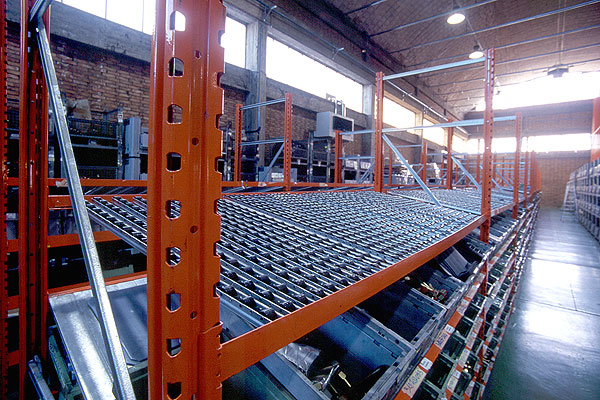Have you wondered what question arises in a customer’s mind while purchasing a pallet rack? They find out its storage capacity to ensure that it serves its purpose. If you are planning to get a pallet rack, you must look into its components, like the beam and frame. Donracks is one of the best rack manufacturers in Coimbatore, producing premium pallet racks of outstanding quality.
Whenever you purchase a pallet rack, check whether it can hold heavy weights to prevent accidental collapse. Beam capacity is an essential criterion when buying and constructing a pallet rack. Frame capacity also plays a significant role but is not as crucial as beam capacity. In this blog, let us discuss how beam capacities work. By learning in detail about the underlying aspects of beam capacity, it will be easy to choose the right pallet rack.
All You Need to Know About Pallet Rack Beam Capacity & Its Terminologies
Beam capacity is the entire weight that a beam level can hold. It varies based on height, length, steel gauge, and other factors. The beam capacity remains unchanged after installation and is measured as a pair. If you want your pallet rack to function efficiently, it is necessary to calculate the beam and frame capacity. Both these measures will give you an overall idea of the rack’s capacity. New customers may find it challenging to understand the beam terminologies before getting familiarised with them. A few of the standard terms are discussed in detail below.
Beam Height
Beam height is a significant dimension to determine the pallet rack’s capacity. It is also referred to as a profile. Beam height is the measure from top to bottom when it is oriented horizontally. The more the beam’s height, the greater the pallet rack capacity. For instance, a pallet rack 4″ x 96″ will be stronger than one with a 2.5″ x 96″ beam height and length.
Beam Deflection
Beam deflection is the beams bending due to heavy loads. Beams are generally constructed to withstand a deflection of approximately 0.55% of its length If you want to cross-verify if your pallet rack falls under the standard deflection range, you should measure the distance of the beam from the ground at both the middle and end of the beam. Your pallet rack is acceptable if the difference between the two measurements is less than 0.53″. In other circumstances, there is a lot of chance for your beams to get overloaded. For further queries on beam deflection, consult a professional material handling expert.
Beam Length
Beam length is the beam’s length without including the end connectors. This term is often confusing as the beam length gets converted into the pallet rack section’s width once assembled. You must understand that if the beam length increases, the storage capacity of the pallet rack will decrease. As the beam capacity is measured as a pair, the beams must be identical.
Beam Capacity Rating
Beam capacity rating is the weight that can be safely held by the pair of beams together. It does not refer to how strong a single beam is. The vendor will definitely provide this measure to the customer for all new pallet racks. The capacity rating always applies to a pair irrespective of the type of pallet rack beam.
Factors that Impact the Beam Capacity Ratings
While measuring the pallet rack beam capacity, it is always assumed that the load is uniformly distributed, also referred to as the UDL (Uniformly-distributed Load). Beams are analysed to calculate the deflection and strength to check whether they fall under government standards. “Stress-governed” beams are directly proportional to their span and achieve their stress limit early on. Longer-span beams with no deep relation to the span will approach their deflection limit immediately and are called “deflection governed.”
For a standard pallet rack beam, the RMI deflection limit is L/180. For example, if the beam is 80″, the deflection limit will be 18/180 = 0.1″. There are a few other factors that have a considerable impact on the beam capacity rating.
They are:
- The steel’s strength that is used to construct a pallet rack
- The thickness of the steel
- The section properties vary from one manufacturer to another
Learn How to Determine the Beam Capacity
You can check the rack permit document to find out the beam’s static capacity. Usually, the beam capacity is calculated by three dimensions, namely:
- Beam length– This is measured from the inside part of one upright to the inside of the upright that is opposite to it.
- Gauge– Most beams have only a steel thickness of 16 gauge.
- Beam height– This is measured from the beam’s front, vertically from the floor to the top.
The other ways to determine beam capacity are by finding out the pallet type and the kind of load you want to store. By knowing the amount of weight, you can easily calculate the beam capacity you will require. In simple terms, if you want to store two pallets with 500 lbs each, you will need a minimum of 1000 lbs beam capacity or more. This calculation is performed using the formula:
Beam Capacity = Minimum pallet weight x Pallet number/level.
Beam ties, pallet support bars, and wire decks can increase the capacity of the beam and decrease the deflection rate. The manufacturer and product type play a major role and bring changes in the beam capacity. Questioning the manufacturer directly is the best way to determine the beam’s capacity. As beams are not marked with the part number, the manufacturers usually measure the beam’s height to estimate its capacity.
Final Words
By now, you know in and out about beam capacity. With this, you can converse well with any pallet rack supplier to get the pallet rack that suits your requirement. You will also be able to calculate deflection and beam capacity. Thus, you can keep your warehouse safe by knowing the dos and don’ts while loading and checking on the beam capacity rating. Get in touch with Donracks, one of the best rack manufacturers in Coimbatore, if you want to invest in top-quality pallet racks.





